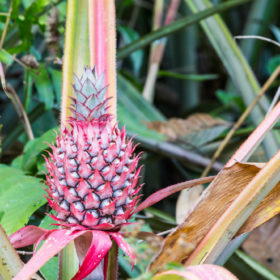
Sucrose – The Good and the Bad
Sucrose, the third primary type of sugar, is otherwise known as cane sugar, beet sugar, or just plain old table sugar. While a lot of ink has been spilled on the evils of this sort of sugar, it’s not the sugar itself that is such a problem, but rather the way it’s been processed.
Sucrose in its natural state – as found in beets and sugarcane – comes along with considerable plant fiber. Thanks to this fiber, sucrose is extracted and released into the bloodstream relatively slowly, which helps to keep serum blood glucose stable. When this fiber is taken out of the equation, as it is when sucrose is heavily refined, the sugar careens into the bloodstream like a car with bad brakes. Joyriding through your veins and arteries, sucrose gives you a sugar high, which of course makes you want more sugar. So you eat more if it’s available (and your willpower allotment for the day has run out).
Sooner or later, though, the sucrose runs out and your body learns, yet again, that what goes up must inevitably come down. Hard. This is the fabled sugar crash, and it is responsible for many an unscheduled facedown desk-nap, as well as epic crabbiness, assorted road rage, and other questionable behavior.
About 80% of the sucrose available today is made from sugarcane, which grows in warmer climates and does not tolerate frost. The remaining 20% is derived from beets, which are grown in cooler climates. Many of the beets used in producing sugar are genetically modified. Unfortunately, though, both types of sugar are commonly mixed together as table sugar, so avoiding the GMO type is nearly impossible.
The health risks of consuming table sugar in its various forms are well documented. They are also commonly ignored or rationalized away by brains and taste buds that have evolved in an environment where sugar was hard to get and the rule was “get it while it’s there to be got.”
Although we’re drowning in sugar these days, that rule has not been updated. Thus, despite warnings, we gobble sugar like there’s no tomorrow. As a result, we have rampant insulin resistance, which left unchecked can become metabolic syndrome, characterized by elevated triglycerides, high blood pressure, and increased visceral fat (fat deposited around the internal organs).
What do we do, apart from reprogramming our programming or becoming paragons of steely determination and willpower? The best idea I’ve come up with is to limit the situations in which willpower is required. So, be strong like a bull at the grocery store, and don’t let all those sugary goodies jump into your cart and ride home with you. Then, when you do get home, there’s no temptation and no need to turn to willpower, which will always, always let you down eventually. If you must have sweet stuff in the house, make it honey or Grade B maple syrup. Your mind, emotions, and overall health will thank you for it later!



